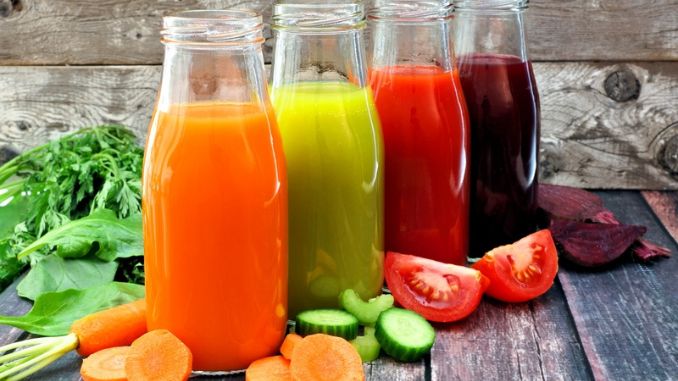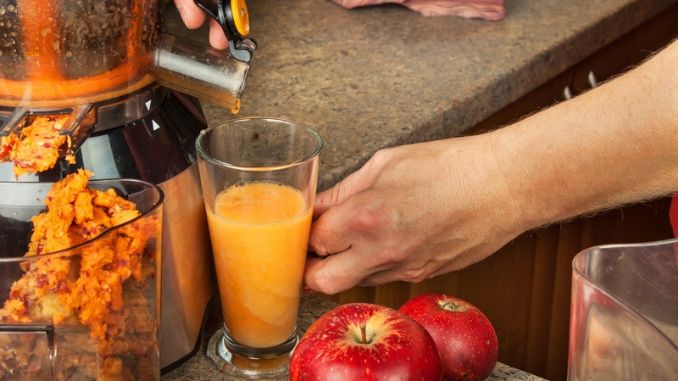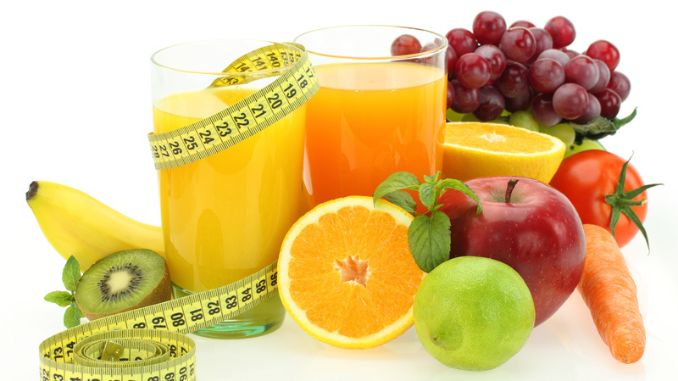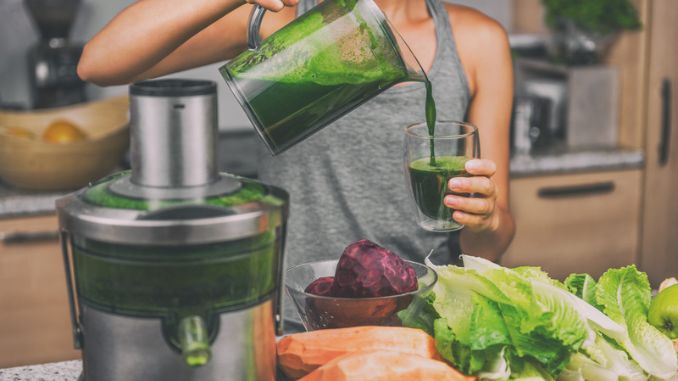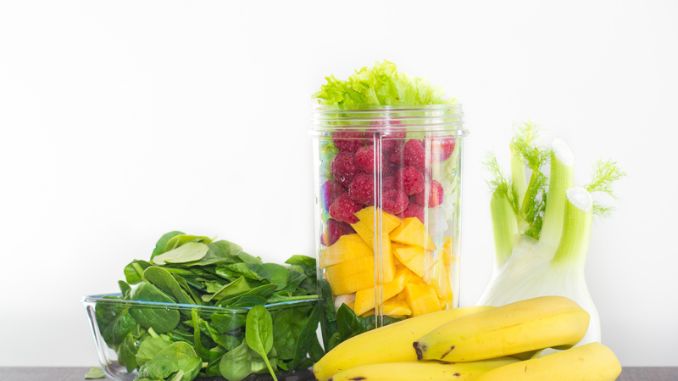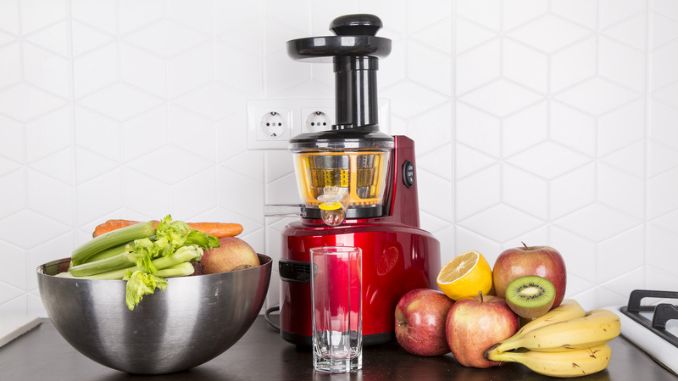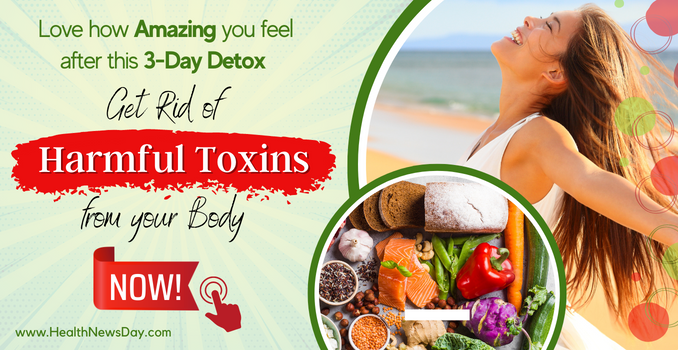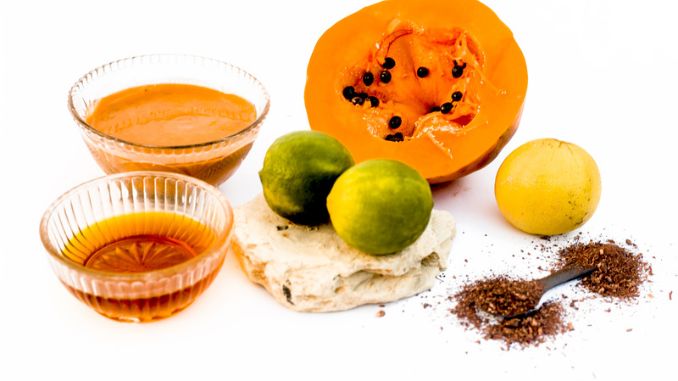You’ve heard the hottest celebs talk about them. They’re in all the magazines. You’ve probably even seen the pre-made versions in stores. Still, you’ve got the same question… What in the world is juice cleanses? Here’s the ultimate guide to juice cleanse: all you need to know to juice like a pro.
First off:
Nope, it’s not a 3-day experiment in which you drink only Mott’s, Tropicana, and Ocean Spray juices till your heart’s content.
A juice cleanse is a diet regimen in which only vegetable- and fruit-based juices are consumed. These juices are not your grocery store standbys. The juices are completely natural on a cleanse — made only from fruits and vegetables.
You or a juicing company that provides pre-made juices can do the act of juicing these fruits and vegetables. Generally, to make cleansing juice, you’ll use a centrifugal juicer to grate and grind the fruits and veggies. The most commonly used produce items are oranges, bananas, apples, carrots, spinach, and beets. All the liquid will be extracted from these foods, and the liquid result will be the juice you consume. The rest of the pulp is generally discarded.
Juice can be done at home with a juicing appliance, or pre-made juices can be purchased. The latter is often sold as a set that lasts for a specific time. Included are instructions for juice cleanse consumption.
Why Do a Juice Cleanse?
There are various reasons you might do a juice cleanse. Some people juice because they have a medical problem that prevents them from eating solid foods, and a liquefied diet is more suitable. Others might juice because they don’t enjoy eating solid fruits and vegetables, but they like juices and know that fruits and veggies are essential for excellent health.
Still, other proponents of juices claim that a juice diet can boost the immune system through the intense influx of nutritious foods. And, of course, many of those with digestive issues swear by detoxes to improve regularity.
For the most part, however, people use juice cleanses for one of two reasons: either for weight loss or to detoxify the body (expelling the harmful substances from the body may help to improve skin, get rid of headaches, have a better sleep, and enhance overall health.)
The Ultimate Guide to Juice Cleanses for Detoxification
One common goal of juicing is to feel better and achieve lasting health by “detoxifying” the body. Juicing is a common all-natural treatment for bloating, headaches, and overall sluggishness, commonly seen as symptoms of a toxic build-up in the body. Proponents of the idea that detoxification can be achieved with a juice cleanse say that the effect is two-fold.
First, one can consume many more units of fruits and vegetables in one sitting by drinking one serving of all-natural juice. This is because the fruits and vegetables are liquefied, which shrinks them.
Second, eating these numerous pulverized vegetables and fruits provides an extremely high potency of vitamins and nutrients. Therefore, you can flush the body of all toxic build-up when you drink only juices for an entire day or several days.
What is this “toxic build-up” you’d be trying to eliminate? It’s generally seen as a build-up of free radicals, groups of atoms, or single atoms with an odd number of electrons. Scientists have long linked the build-up of free radicals with the development of cancers.
There are numerous ways these unpaired atoms can build up in the body. First, they often accumulate as the byproduct of our body’s natural processes. But they can also occur when you expose yourself to household chemicals, environmental toxins, unhealthy processed foods, and cigarette smoke.
Juicers who consume lots of fruits and vegetables can consume a high potency of antioxidants, which are thought to eliminate free radicals. This supports the idea that a juice cleanse can rid the body of toxins and make you healthier inside and out.
Of course, not all medical professionals are on board with this theory. Skeptics say a cleanse or detox is unnecessary to eliminate free radicals and toxins. They instead propose that the body already has all of the detoxifying power necessary to ensure a clean system.
Juice Cleanses for Weight Loss
Weight loss is the other key reason many people go on juice cleanses. For some experts, however, the jury’s still out on whether or not juicing can help you lose weight.
Proponents of juicing for weight loss say that it’s simply natural: if weight loss is achieved by consuming fewer calories than you put out, consuming only vegetables, which have little to no caloric value, is perfect.
On the other hand, you’ve got to remember that most fruits have a significant amount of calories. Furthermore, vegetables and fruits are low in caloric value, mainly because their high amounts of fiber cancel out the sugar calories — especially in fruits. However, when you juice fruits and vegetables, that fiber is usually lost; it’s discarded as the pulp leftover from the juicing process.
Still, if you’re hoping to kick start a weight loss program, some people have succeeded in starting a more conventional diet with one to three days of juicing. You’ll consume fewer calories with juicing alone, decreasing your daily intake.
Is Juice Cleanses Safe?
Juice can be safe, yes, but it can also be dangerous. Follow the safety guidelines below to ensure your juice cleanses safely!
• Consult your doctor first.
Before starting any new diet regimen, you should always talk to your doctor. You can also consult a registered dietician about the pros and cons of a juice cleanse.
• Avoid juice cleanses if you have medical problems.
Specific medical issues mean that juicing is not for you. Avoid juicing if you are undergoing chemotherapy or have kidney disease, diabetes, or nutritional deficiencies.
• Ensure nutritional completeness.
You’ll consume juices instead of full meals with a juicing regimen. But you’ll still want to make sure you’re achieving optimal nutrition. You will surely meet your fruit and veggie goals, but you need to consider that you may not consume as much protein, fiber, or other nutrients as usual. If possible, however, you can manipulate the foods you include in your juices to achieve optimal nutrition.
• Keep your juicing duration relatively short.
If you’re looking to kick start a weight loss diet or hoping to achieve the benefits of detoxification, this can be achieved within three days at the most. Most medical professionals say there’s no need to go on a cleanse for more than three days. In fact, for some, cleansing for too long can be dangerous as our bodies require more diverse foods than just ground fruits and vegetables.
What Liquids and How Much Should You Drink During a Juice Fast?
All juices are different. If you’re following a juice diet plan or planning to purchase a commercially prepared liquid meal replacement plan, you’ll already have the types of juices you’ll be drinking and how much planned out for you ahead of time.
On the other hand, you might also consider creating your juice cleanse plan. If this is the case, you have the following “juice” options before you:
-
Vegetable and “Green” Juices
Vegetable or “green” juices are typically juices made only of vegetables. They tend to have a few large handfuls of leafy greens, giving them a bright green hue. You should drink the greenest juices; at least one juice a day should be green, or you can incorporate the number of veggies it would take for one green juice into your other juices.
-
Fruit Juices
Fruit juices tend to be sweeter and more filling than pure vegetable juices. Although these can be chock full of healthy nutrients, an all-fruit juice diet typically isn’t recommended. Mixing fruits and vegetables is optimal for achieving most of the benefits of juicing. Drink a maximum of one fruit juice each day on your cleanse.
-
Water
No matter your motivation for juicing, you should consume water as it is an acceptable liquid during your cleanse. Drink 8 to 12 glasses of water each day.
In addition to water, many juices and cleanses promote drinking green and herbal teas. Green tea, especially, promotes detoxification by ridding the body of toxins.
-
Broths
Lastly, you may consider consuming broths as well. Many people swear by the nutrients in bone broth, which you can create naturally from organic meat bones. Bone broth can also be a good idea if you’re worried about lacking protein during your juice cleanse.
Choosing Your Juice Cleanses: Programs to Consider
DIY Cleanses Vs. Bottled Juice Cleanses
DIY cleanses arguably less expensive than pre-made bottled juice cleanses, and even though you need to make your juices, you don’t necessarily have to come up with the recipes. The web is full of DIY juice cleanse plans, some better than others; all you need to do is pick a suitable menu – hit this link to read about some of them and get a great step-by-step action plan for a DIY juice-to-cleanse.
On the other hand, DIY cleanses necessitate purchasing a centrifugal juicer, which can be rather pricey, depending on the model you purchase. This way of juicing will also mean buying all of your fruits and vegetables and juicing them daily.
The best thing about fully DIY cleanses is that you pick your recipes and leave out the stuff you don’t like. The thing is, not all of the pre-made juices taste that great; for example, Tara at Treble in the Kitchen says this about her cleansing experience with bottled juices:
“It wasn’t the thought of only drinking juices that was the problem for me…it was the flavor. Unfortunately, I couldn’t get many of the juices down. I wasn’t drinking all the nutrients I should have been getting.”
As long as you follow the basic principles. DIY juices may be a way to go, especially for the picky eaters (and drinkers!)
1-Day, 3-Day, and Weeklong Juice Cleanses
If you choose to go on a pre-planned cleanse, you’ll usually be able to purchase a juice cleanse for one or three days. Weeklong juice cleanses are also available, but they are not recommended unless you also incorporate solid, nutritional foods into some portions of your day. Eating only liquefied food for an extended period is not normal.
For beginners, one-day juices are probably the best choice. You can try it without signing on for three whole days. If you like a one-day cleanse, awesome! You can wait a few weeks and then try a three-day cleanse. And if you don’t like it, no sweat. You can quit while you’re ahead.
Your First Time? The Ultimate Guide to Juice Cleanse
Below, read about what to plan and expect from each phase of your juice cleanse.
Pre-Juice Cleanse Guidelines
To prepare for your cleanse, prep with a low-inflammation diet of clean, whole foods. This means avoiding packaged and processed foods. It would help if you also ate as organically as possible. Here is a list of good foods to start with:
- Fruits and vegetables
- Seeds and nuts
- Miso, sauerkraut, and other fermented foods
- Oils, including sesame, olive, sunflower, coconut, hemp, almond, and flax oils
- Organic eggs, chicken, and fish
- Seaweed
- Whole grains, including quinoa, amaranth, brown rice, and millet
- Legumes, lentils, and beans
You should also consume between eight and 12 glasses of water each day. Do all of this for two to five days before beginning your cleanse.
Also, make sure to set your intentions for your diet. Preparing your mind for what you are about to embark on is essential. What are your goals with this juice cleanse? What do you want to achieve? And what will make you successful? Please write down the answers to these questions and keep them nearby or even put them up on Post-it notes around your home to remind yourself to persist even when the going gets tough.
If you are creating your cleansing plan, ensure you incorporate balanced nutrition in your juices throughout the day. Similarly, ensure that you are eating enough calories. Even if you’re juicing for weight loss, you should consume at least 1200 calories daily.
Lastly, write exactly what you plan to do each day before embarking. You’ll want a clear plan before you begin.
While You’re Cleansing
• Thinking About Hydration
Juice is naturally a liquid; however, you should drink water on this juice cleanse. Nearly all pre-planned will promote consuming half your weight in ounces of water every day. No matter your goal for this cleanses, there’s no reason to avoid water.
• Products and Drinks to Avoid while Juicing
When juicing, you’ll only be consuming juiced fruits and vegetables (and broths and teas if you’ve chosen to do so). In this way, you should avoid all other foods and drinks, such as fish, meat, poultry, bread, sweets, coffee, soda, store-bought juice, and packaged and processed foods.
• Monitor How You Feel
You may feel great almost all the way through – some people have a better mood and more energy even while they are cleansing, not only afterward; American model Julia Friedman says: “After the first day, I felt amazing! I wasn’t very active and a little lethargic, but my body felt healthy, and once I woke up the next morning, I felt a lot better.” By the way – Julia dropped out on the third day of cleansing as she felt sick; she strongly recommends listening to your body if you try juice fasting and being reasonable and feeling when it’s best to give it up.
So while you’re cleansing, monitor how you feel, and if you ever feel faint, earnestly ill, or seriously symptomatic in any other way, it’s best to stop the cleanse and seek medical attention.
Another possibility is there will be plenty of physical and mental discomfort from the beginning of your cleanse or in the process; as Kati from Black White Vivid puts it, “Honestly, I thought that this juice cleanse would be a lot easier for me. I usually eat quite healthily, and I don’t mind being hungry. Oh boy, I was so wrong (but in the end, it was all worth it.).”
If you are following a cleansing plan, drink each juice at the appropriate time. Don’t drink them too close together, or you may experience digestion problems such as a stomach ache or diarrhea. Also, you’ll consume all of your daily food at once, making you hungry later in the day.
After the Juice Cleanse
Ease back into the consumption of whole foods. On the first day back, incorporate whole veggies, fruits, soaked nuts, and seeds, and continue green juices and smoothies.
On day two, include more protein (like eggs and cottage cheese), salads, soups, and healthy wraps. And finally, on day three, eat regular proteins (fish, eggs, and organic pastured chicken and turkey) and whole grains.
Your Post-Cleanse Diet
After easing back into solid foods, stick to your good habits by staying on track with a healthy regimen. Eat a balanced diet of fruits, veggies (in whole or juice form), lean protein (for example, fish, eggs, and organic pastured chicken and turkey), whole grains, and healthy fats (for example, olive oil, avocados, and nuts).
Juicing: Take It or Leave It?
For some, juicing can be an excellent way to improve health, lose weight, detoxify, boost the immune system, or improve digestion. It certainly solves many ailments, and many swear by their juicing regimens.
Still, not everyone can get on board with juicing. And if you don’t see the point of detoxification or can’t imagine giving up your solid foods, you’re not alone.
Finally, the most important thing to remember is that juicing is not the only way to achieve a healthy body and mind. Exercise, a nutritious diet, spending time with people you care about, and working in a passionate field can all contribute to a healthy body and mind. Juicing is just one other thing to try.
And if you do try it, use this guide. We hope it helps!
Any thoughts or questions? Get the discussion started in the comments. Learned a lot? Hit the share button below to impart the knowledge!

Rick Kaselj MS, is a leading kinesiologist and injury specialist as well as co-creator of the best-selling Unlock Your Hip Flexors program. Rick creates exercise programs that help people heal injuries and eliminate pain, so they can go back to living a full, active, healthy life.

